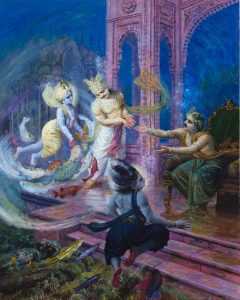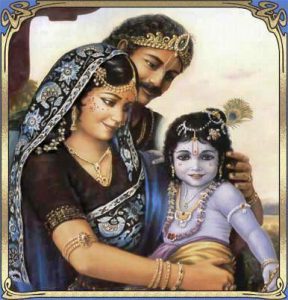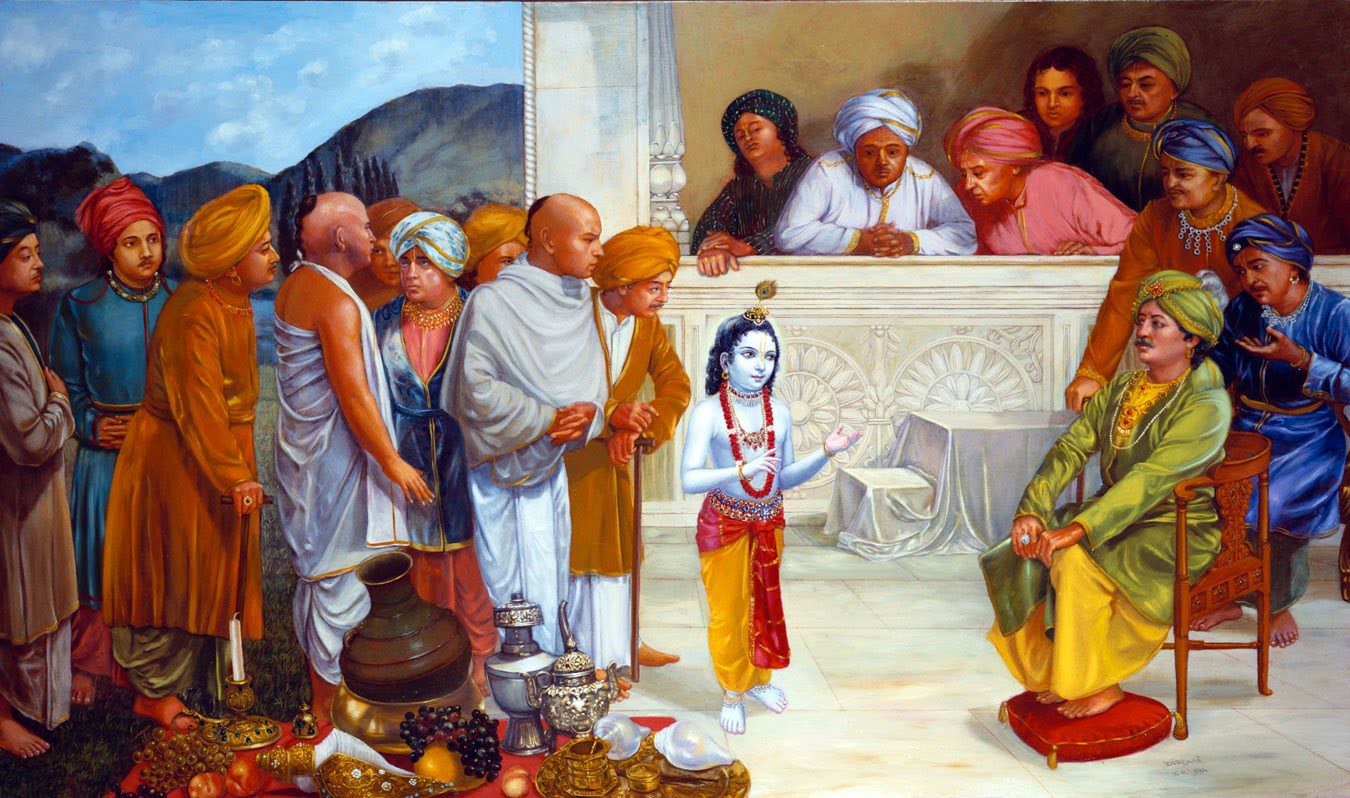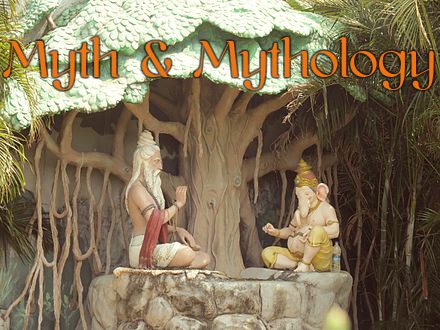Nilanjana recounts a tale from the Bhagavatam about how Nanda, and the gopas of Vrindavan, realised the divinity of his son, Krishna. Read more in the weekly column, exclusively for Different Truths.
Sukha asked, “Many a time we cannot tell a dream from reality, isn’t it?”
Parikshit agreed, “Yes. When you narrate these stories and I see them playing in front of me, much like a cosmic drama, I am not sure if all this is just a dream?”
“Well…” Sukha said, “The cowherds had the same experience.”
“How?” Parikshit asked.
Sukha began narrating the next story, “Nanda, Krishna’s father, was following the rituals for the Ekadashi vrat. As per the vrat, he had to fast on Ekadashi and take a dip in the river the next morning, on Dvadashi, be fore having his meals. So Nanda went to take a dip in the river Yamuna just before sunrise. Many other cowherds accompanied him since they were following the same ritual too.
fore having his meals. So Nanda went to take a dip in the river Yamuna just before sunrise. Many other cowherds accompanied him since they were following the same ritual too.
Now, Nanda took a dip into the waters and did not emerge out of it. The other cowherds waited for him. But he did not come out of the water. They ran to Balarama and Krishna, panic-stricken.
Krishna realised what had happened. An accomplice of Varuna (lord of the water) had played a prank and taken Nanda to the netherworld. Krishna wasted no time and went to Varuna’s palace in the netherworld. Varuna was delighted to welcome Krishna to his palace. He profusely apologised for the mischief that his accomplice had played on Nanda. He asked for Krishna’s blessing knowing full well that a glimpse of the Lord can release one from the cycle of births and deaths. Krishna and Nanda came back to Vrindavan.
Nanda realised that his son must not be just a mere mortal for the lord of waters to worship him that way. He told his fellow gopas and they agreed with the same.
The elders of the village requested Krishna to be kind enough to show them a glimpse of Vaikuntha (the  heavenly abode of Vishnu). Krishna heard their request. He pondered about it for a long time, “The Atman (individual soul) is a part of the Brahman (the cosmic spirit). It is untouched by the gunas1. Gradually the ego sprouts and then Maya (illusion) takes over. The atman forgets its true nature and gets entangled in the samsara (material world). Slowly, the six evils2 capture the atman. The cycle of births and deaths then begin until the atman realizes the truth (that it is a part of the all-pervading cosmic spirit). I have to show these innocent people the truth…”
heavenly abode of Vishnu). Krishna heard their request. He pondered about it for a long time, “The Atman (individual soul) is a part of the Brahman (the cosmic spirit). It is untouched by the gunas1. Gradually the ego sprouts and then Maya (illusion) takes over. The atman forgets its true nature and gets entangled in the samsara (material world). Slowly, the six evils2 capture the atman. The cycle of births and deaths then begin until the atman realizes the truth (that it is a part of the all-pervading cosmic spirit). I have to show these innocent people the truth…”
“Did they get to see Vaikuntha?” Parikshit was curious!
Glossary
1. Gunas – Literally means qualities or attributes. There are three kinds of gunas:
i) Sattvaguna or sattva – This is the highest of the three gunas. It indicates goodness and purity;
ii) Rajoguna or rajas – This is the second, indicating activity (when on a positive swing) and restlessness (when negative);
iii)Tamoguna or tamas – This is the lowest one indicating rest (when positive) and lethargy (when negative).
All the three take turns to dominate the human mind.
2. The six evils: Kama (lust), Krodha (anger), Lobha (greed), Moha(Delusion), Mada (arrogance), Matsarya (envy)
[To be continued]
Footnote: Srimad Bhagavatam is often called the Bhagavad Purana. Authored by Ved Vyasa, the stories are about the various avatars(incarnations) of Lord Vishnu, also known as Narayana. These stories are narrated by Ved Vyasa’s son Sukhadeva to King Parikshit.
©Nilanjana Dey
Photos from the Internet
#SrimadBhagavatam #VedVyasa #StoriesOfNarayana #Kama #Krodha #Lobha #Mada #Moha #Matsarya #Vrat #GopasOfVrindavan #Krishna #MythAndMythology #DifferentTruths






 By
By


 By
By